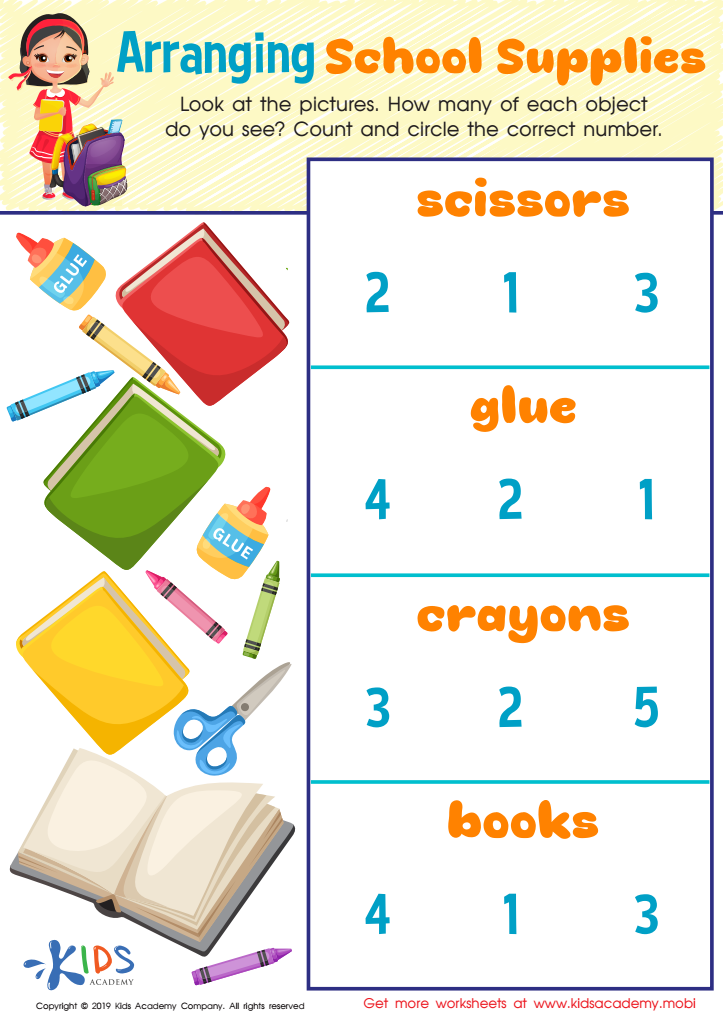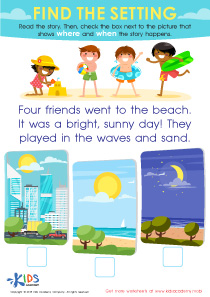Understanding Sequences Easy Worksheets for Ages 3-8
5 filtered results
-
From - To
Explore our "Understanding Sequences Easy Worksheets" tailored for children ages 3-8! These engaging worksheets aim to boost early learning skills by introducing young learners to the concept of sequences through fun activities. Each worksheet is thoughtfully designed to enhance critical thinking and pattern recognition while making learning enjoyable. Perfect for home or classroom use, our resources help children develop a strong foundation in math and logic. With colorful illustrations and interactive tasks, kids will love sorting, categorizing, and sequencing objects, boosting their understanding in an engaging and age-appropriate manner. Discover the joy of learning sequences today!


Arranging School Supplies Worksheet


Using Number Sentences to Solve Problems Worksheet


When Does It Happen? Worksheet


Planting Seeds for 11 Worksheet


Haystack Steps Worksheet
Understanding sequences is a foundational skill that plays a critical role in the cognitive and academic development of children aged 3-8. For parents and teachers, recognizing its importance can enhance learning experiences. First, sequences help children develop logical thinking and enhance problem-solving abilities. By understanding concepts such as order, patterns, and cause and effect, children begin to comprehend how events and actions are interconnected in their everyday lives.
Moreover, sequential thinking is crucial in mathematics and literacy. In math, recognizing numerical sequences aids in grasping addition, subtraction, and early problem-solving skills. In literacy, understanding narrative structures fosters better storytelling and comprehension.
Additionally, sequencing activities can improve memory and attention span. Engaging children with age-appropriate games, stories, or practical tasks promotes retention of information through active learning.
Lastly, fostering an understanding of sequences encourages social skills, as children learn to share ideas and follow directions. For parents and teachers, prioritizing the teaching of sequences is not merely an academic goal—it's a means to drive holistic development, laying a strong foundation for future success in various domains of life. Ultimately, a focus on sequence understanding equips children with essential skills for learning and interpersonal growth.
 Assign to My Students
Assign to My Students




















